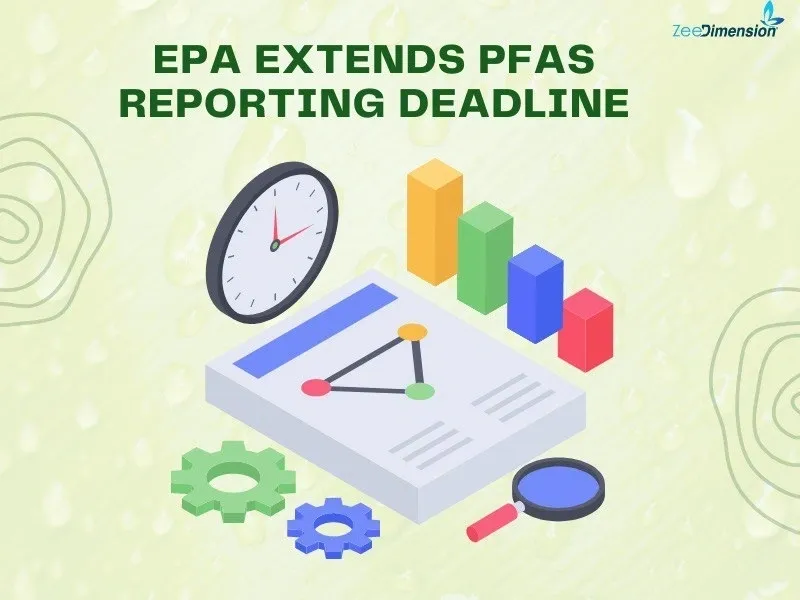
What Are PFAS?
Since the 1940s, PFAS, or per- and polyfluoroalkyl compounds, have been extensively utilized in several sectors. Due to their special qualities, which include resistance to heat, water, and oil, they are useful in a variety of applications, such as:
-
Non-stick: cookware (like Teflon)
-
Water-repellent: clothing and outdoor gear
-
Stain-resistant: fabrics and carpets
-
Food packaging (e.g., microwave popcorn bags)
-
Firefighting foams
Often called “forever chemicals,” PFAS are slow to break down in both the environment and the human body, which has led to concerns about their potential health risks, including links to cancer, liver damage, immune system effects, and developmental issues in children.
How do PFAS enter the environment?
PFAS can enter the environment in several ways, such as:
1. Industrial Discharges: PFAS-producing and -using factories may leak these chemicals into the soil, water, and air while operating.
2. Wastewater Treatment Plants: PFAS can end up in rivers, lakes, and seas because they are not eliminated during wastewater treatment.
3. Landfills: When PFAS-containing products, including treated textiles and non-stick cookware, are disposed of in landfills, the chemicals may seep into the groundwater and soil.
4. Water supplies in the vicinity may get contaminated due to using firefighting foams containing per- and polyfluoroalkyl substances (PFAS) in airports and military installations.
5. Consumer Products: With regular usage, products including food packaging, non-stick cookware, and stain-resistant fabrics can gradually leak trace levels of PFAS into the environment.
6 ways companies can reduce their environmental effect and prevent PFAS:
1. Source PFAS-Free Materials: Select suppliers that offer PFAS-free alternatives for products like textiles, packaging, and firefighting foams.
2. Adopt Green Chemistry: Embrace green chemistry principles to design and use safer chemicals and eco-friendly processes.
3. Revise Manufacturing Processes: Update production methods to phase out PFAS, such as by using non-fluorinated surfactants.
4. Educate and Train Employees: Train staff on the risks of PFAS and proper handling and disposal of PFAS-containing materials.
5. Ensure Regulatory Compliance: Stay current with and adhere to local, national, and international PFAS use and disposal regulations.
6. Promote Product Transparency: Clearly label products and inform consumers about the steps taken to eliminate PFAS.
Businesses can greatly lessen their dependency on PFAS and improve the environment by implementing these steps.
Why Did the EPA Extend the Deadline?
The EPA has recently extended the reporting deadline for PFAS (per- and polyfluoroalkyl substances) under the Toxic Substances Control Act (TSCA). The new deadline for most companies is now January 11, 2026, replacing the original date of May 8, 2025.
This extension gives companies more time to meet the reporting requirements, which include submitting data on PFAS uses, production volumes, disposal practices, exposures, and associated hazards. The delay is partially due to budgetary challenges that impacted on the development of the required reporting software.
The PFAS reporting deadline was extended by the EPA for several important reasons:
– Financial Restraints: Because of financial restrictions, the necessary reporting software has not yet been developed.
– Industry feedback: A lot of businesses asked for more time to gather the required information and guarantee correct reporting.
– Complexity of Requirements: Adequate compliance takes longer because of the substantial reporting requirements, which include information on PFAS uses, production amounts, disposal, exposures, and dangers.
The purpose of this extension is to allow businesses enough time to properly comply with the regulations.
What’s the EPA’s Position?
Even with the U.S. extension, the EPA remains committed to reducing PFAS pollution. They are working on establishing health advisory levels and pushing for safer alternatives while keeping a close watch on PFAS-related industry practices.
Preparing for Stricter Regulations While businesses in the U.S. have until 2026, Canadian companies must act sooner to meet the 2025 deadline. Staying ahead of these critical requirements is key to managing compliance and mitigating risks on both sides of the border.
What Does This Mean for Businesses?
Industries now have extra time to evaluate their products and monitor PFAS use. Sectors like aerospace, automotive, and textiles can utilize this extension to prepare for stricter regulations and explore alternatives to PFAS in their products.
With the extended reporting deadline, businesses can:
-
Assess Products: Perform detailed assessments to identify any PFAS content in their products.
-
Track PFAS Use: Establish or enhance tracking systems to monitor PFAS throughout their supply chains.
-
Prepare for Stricter Regulations: Develop strategies to meet upcoming regulations and ensure compliance with all reporting requirements.
-
Explore Alternatives: Invest in research and development of PFAS-free materials and processes, mitigating future regulatory risks and liabilities.
Industries such as aerospace, automotive, and textiles can benefit from this extension by taking proactive measures to transition away from PFAS and adopt safer, more sustainable practices.
Conclusion
Businesses now have a great chance to evaluate how they utilize these chemicals and get ready for new restrictions thanks to the EPA’s recent extension of the PFAS reporting deadline. Through the implementation of strategies aimed at reducing PFAS dependency, such as procuring materials free of PFAS and embracing green chemistry principles, businesses can reduce their environmental effect and conform to changing regulations. Proactive moves towards safer alternatives and improved compliance, as sectors negotiate this prolonged timeframe, will not only contribute to a healthier environment but also position firms for long-term sustainability and regulatory readiness.







